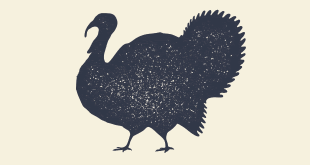Where does tobacco come from? The name given to the plant and cured leaves of Nicotiana, and it can be used in various ways – for smoking, chewing and snuffing. It was first cultivated by the Indians of North and South America. Accounts of Christopher Columbus’s first voyage in 1492 speak of the natives of Cuba using ‘smoking reeds’ – a kind of primitive pipe. The Indians smoked both for pleasure and for ceremonial purposes, a good example of the latter being the Red Indian pipe of peace. Once introduced into Europe, the habit of smoking spread rapidly to the far corners of the world.
Where does tobacco come from?
Tobacco Key Facts:
- Tobacco kills up to half of its users.
- Tobacco kills more than 8 million people each year. More than 7 million of those deaths are the result of direct tobacco use while around 1.2 million are the result of non-smokers being exposed to second-hand smoke.
- Over 80% of the world’s 1.3 billion tobacco users live in low- and middle-income countries.
- In 2020, 22.3% of the global population used tobacco, 36.7% of all men and 7.8% of the world’s women.
- To address the tobacco epidemic, WHO Member States adopted the WHO Framework Convention on Tobacco
- Control (WHO FCTC) in 2003. Currently 182 countries have ratified this treaty.
- The WHO MPOWER measures are in line with the WHO FCTC and have been shown to save lives and reduce costs from averted healthcare expenditure.
Overview:
The tobacco epidemic is one of the biggest public health threats the world has ever faced, killing more than 8 million people a year, including around 1.2 million deaths from exposure to second-hand smoke.
All forms of tobacco are harmful, and there is no safe level of exposure to tobacco. Cigarette smoking is the most common form of tobacco use worldwide. Other tobacco products include waterpipe tobacco, various smokeless tobacco products, cigars, cigarillos, roll-your-own tobacco, pipe tobacco, bidis and kreteks.
Over 80% of the 1.3 billion tobacco users worldwide live in low- and middle-income countries, where the burden of tobacco-related illness and death is heaviest. Tobacco use contributes to poverty by diverting household spending from basic needs such as food and shelter to tobacco.
The economic costs of tobacco use are substantial and include significant health care costs for treating the diseases caused by tobacco use as well as the lost human capital that results from tobacco-attributable morbidity and mortality.
Key measures to reduce the demand for tobacco
Second-hand smoke
Second-hand tobacco smoke is the smoke emitted from the burning end of a cigarette or from other smoked tobacco products (such as bidis and water-pipes) and the smoke exhaled by the smoker. More than 4000 chemicals have been identified in tobacco smoke and there is no safe level of exposure to second-hand tobacco smoke.
Based on the scientific evidence, the Conference of the Parties to the WHO Framework Convention of Tobacco Control (WHO FCTC) has concluded that 100% smoke-free environments are the only proven way to adequately protect the health of people from the harmful effects of second-hand tobacco smoke. Smoke-free laws protect the health of non-smokers and are popular, as they do not harm business and they encourage smokers to quit.
Pictorial health warnings:
Large pictorial or graphic health warnings, including plain packaging, with hard hitting messages can persuade smokers to protect the health of non-smokers by not smoking inside the home, increase compliance with smoke-free laws and encourage more people to quit tobacco use. Studies show that pictorial warnings significantly increase people’s awareness of the harms from tobacco use. Mass media campaigns can also reduce demand for tobacco by promoting the protection of non-smokers and by convincing people to stop using tobacco.
Tobacco advertising:
Comprehensive bans on tobacco advertising, promotion and sponsorship can reduce tobacco consumption. A comprehensive ban covers both direct and indirect varieties of promotion:
Direct forms include advertising on television, radio, print publications, billboards and social media platforms.
Indirect forms include brand sharing, brand stretching, free distribution, price discounts, point of sale product displays, sponsorships and promotional activities masquerading as corporate social responsibility programmes.
Taxes:
Tobacco taxes are the most cost-effective way to reduce tobacco use and health care costs, especially among youth and low-income people, while increasing revenue in many countries. The tax increases need to be high enough to push prices up above income growth. An increase of tobacco prices by 10% decreases tobacco consumption by about 4% in high-income countries and about 5% in low- and middle-income countries.
Tax avoidance (licit) and tax evasion (illicit) undermine the effectiveness of tobacco control policies, particularly higher tobacco taxes. The tobacco industry and others often argue that high tobacco product taxes lead to tax evasion. However, experience from many countries demonstrate that illicit trade can be successfully addressed even when tobacco taxes and prices are raised.
Quitting Tobacco:
When tobacco users become aware of the dangers of tobacco, most want to quit. However, nicotine contained on tobacco products is highly addictive and without cessation support only 4% of users who attempt to quit tobacco use will succeed. Professional support and proven cessation medications can more than double a tobacco user’s chance of successful quitting.
 Kids Portal For Parents India Kids Network
Kids Portal For Parents India Kids Network







